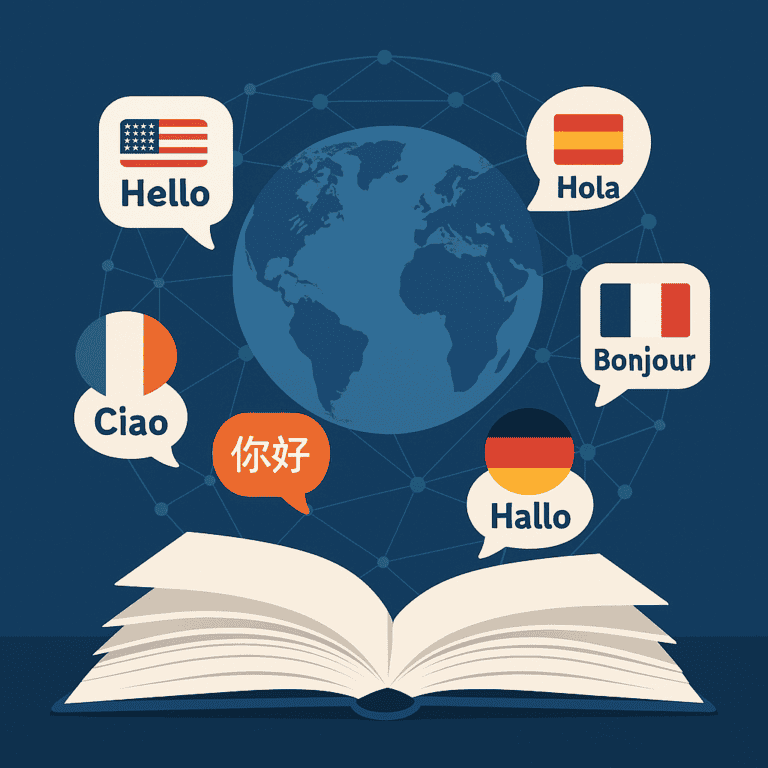eBook Templates: 3 Best Design Hacks

“The key to successful self-publishing is professionalism: in cover design, editing, formatting, and marketing.” – Hugh Howey
As an indie author, you’re at the forefront of a publishing revolution, poised between the exciting prospects of opportunity and the complexities of new challenges. Understanding the significance of diverse formats is essential in this evolving landscape. By presenting your work in multiple formats (from eBooks and audiobooks to hardbacks and international translations), you open up fresh avenues to connect with readers across the globe.
An eBook exemplifies accessibility and convenience, turning readers’ smartphones into gateways to imaginative realms. The digital format, especially EPUB, is a practical choice for self-publishing authors, offering cost-effectiveness and flexibility in managing production expenses. eBook templates make the transformation possible for new indie authors.
In this part of our writer’s guide series, we continue to delve into eBook crafting basics. We’ll cover using ebook templates as a blueprint and leveraging artificial intelligence with templates.
Ready? Let’s get started.
eBook templates are your secret weapon for an eBook’s visual appeal. Templates are pre-designed layouts or structures that give your book a professional look without requiring extensive design skills.
Think of them as architectural plans for a house, guiding you through the building process. eBook templates provide a pre-designed layout. They typically include headers, footers, page numbers, and illustration space. The choice of template influences how readers perceive your work. For instance, a novel might benefit from a simple, clean layout to keep a reader focused, while an instructional eBook might need a more complex layout with space for diagrams and bullet points.
For a fantasy novel, Shadows of the Ancients, an author could customize the chosen template by using a Gothic font for chapter titles and adjusting margins to create a more immersive reading experience. These changes could reflect the novel’s mysterious and ancient setting, drawing readers deeper into the story’s world.
Platforms like Amazon Kindle Direct Publishing (KDP), Apple Books, and Google Play Books offer a range of templates. The eBook templates, designed to be user-friendly, allow you to input your text and images easily. The best part? Many platforms provide free templates, making professional-looking layouts accessible.
Choose from various free templates on Canva, Google Docs, Microsoft Word, and more platforms. Kindlepreneur offers free eBook copyright templates.
Why Use eBook Templates?
Imagine trying to build a house without a blueprint. Without a blueprint, attempting to build a house would probably result in a disorganized and confusing outcome. The same goes for eBook crafting without a template. The template provides a simple structure, ensuring an organized and easily digestible interior format. Plus, it potentially saves you a lot of time and frustration.
The eBook templates also come in various shapes and sizes, catering to different genres and styles. Whether you’re working on a thrilling novel or an informative guide, there’s a template size to fit your needs. Because templates allow you to focus on the ideas and writing, they’re ideal for aspiring authors.
How Do You Navigate eBook Templates?
Free templates? Yes, that’s right. Many platforms provide free templates to kick-start your writing. Some are 100% free. Others are free to try. They come in various layouts and structures, catering to different genres and styles.
Choose the suitable eBook template for your genre. Start by understanding the conventions of your genre. For instance, romance novels have a unique structure compared to mystery novels. Next, consider your style and how it aligns with various templates. Do you prefer short, concise chapters or long, detailed ones? Finally, browse different templates and select one that resonates with you and your genre. The right one will enhance your manuscript, not restrict it.
For a self-help eBook titled Mindful Living, the author might use a clean and straightforward template featuring bullet points for key strategies and call-out boxes for personal anecdotes. This template could help highlight critical practices and personal stories, making the content more engaging and easier to digest for readers seeking personal growth.
Here’s a quick look at some popular platforms for eBook crafting.
- Canva is known for its user-friendly interface. Canva offers a variety of free cover templates and interior templates. Their drag-and-drop feature makes it easy to create professional-looking eBooks. They also have a pro version. If you’re going to publish more than one book, the pro version is worth the price.
- Microsoft Word, the classic word processor, provides a range of free templates. It has minimalist and more elaborate layouts. These templates are easy to customize, making them a favorite among many new writers.
- Yes, PowerPoint works for more than presentations. With its easy-to-use interface, you’re able to create visually engaging eBooks. This makes PowerPoint an excellent option for any eBook that benefits from a visual-centric approach, such as children’s books, cookbooks, or travel books.
- Google Docs isn’t just a word processor. It’s also a source of free templates. These are simple and easy to use, making them perfect for first-time authors. Plus, it’s possible to collaborate with others in real time. This makes it ideal for co-written works.
- Google Slides, much like PowerPoint, isn’t just for presentations. It also offers an array of free template ideas. Plus, because it’s a cloud-based tool, you’re able to access your work from any device.
The best eBook template, of course, is one that resonates with your ideas and your readers. So, take the time to explore these platforms and find the perfect fit for your writing journey.
When I started on my first eBook project, I was as enthusiastic as a puppy with a new toy. I paid for a sophisticated Adobe InDesign template. I was confident my tech-savvy skills would carry me through. It was sleek and pro but bewildering.
As I grappled with various layouts, days turned into a blur of tutorials and coffee refills. I felt like a novice lost in layers, text wrap, and Bézier curves. In my eagerness to create the “perfect” eBook, I jumped headfirst into the deep end of design complexity.
A friend dropped by one day, and I shared my InDesign woes. She glanced at my screen, stifled a chuckle, and gently suggested, “Have you tried Google Docs?”
Ultimately, I migrated my manuscript to the simpler, free Google Docs. It was a relief. So much for my grand foray into professional-grade layout. I learned a lesson in humility. It also reminded me to match my tools with my actual needs, not my imagined capabilities. Now, I can’t help but laugh at my initial overzealous misstep. Simple doesn’t mean ineffective.
Customize a Template to Make Your eBook Stand Out.
Making an eBook stand out begins with choosing a suitable template. Most of them are customizable. They allow you to make tweaks to fit your needs. Most offer the flexibility to change font style, adjust the margins, or rearrange the chapters. Start with a free template. Download and change it until it perfectly suits your vision.
A common mistake is sticking too rigidly to the structure. eBook templates guide you, not box you in. Tweak the layout to suit your story. There is no one-size-fits-all for templates. However, some sizes are commonly used. For instance, most Amazon Kindle eBooks use 6” x 9.” However, the size may vary depending on the platform. Check the specific requirements of your chosen platform before finalizing the size.
Use the preview option before hitting “Submit.” Always review your work on multiple devices to ensure it looks good and reads well. Avoid overlooking the importance of a captivating cover. Remember, first impressions make lasting impressions. They count. A visually appealing cover draws readers in, while a well-structured layout enhances their reading experience.
The real key to standing out is your content. Use the template as a guide, but let your unique voice shine through. Inject personality into your writing and engage readers with compelling storytelling. After all, it’s not only about how the eBook looks. It’s about how it makes your readers feel.
Successful authors have used outline and copyright templates to streamline their process.
Turn the Page: What’s Your Next Step?
As a first-time indie author, exploring the world of eBook templates can be an exciting adventure. It’s like unearthing a treasure chest of tools to simplify your writing process, making it smoother and more efficient. It has the potential to save you time and energy to spend crafting your narrative. Use a template as a guide, not rules set in cement. Tweak and adjust as needed to match your unique writing style and the specific needs of your story.
As you venture into this brave new world, remember: the magic is in more than the tools you use. It lives in your words, imagination, and ability to weave a story to captivate your readers. Now, with this knowledge in mind, it’s your turn to take the leap. Don’t let the blank page intimidate you. Every talented writer starts with a blank page. Grab a template, start typing, and let your creativity run wild with eBook crafting.
Best Tools and Practices: Crafting Your eBook
With a clear understanding of technical features and templates, you’re ready to bring your eBook to life. But what tools should you use, and what practices should you follow?
With a cover, remember in the digital world especially, people do judge a book by its cover. It should be eye-catching and relevant to the content. It’s often worth investing in a cover designer to ensure your book stands out in the crowded digital marketplace. Another option is book cover templates, such as those at Book Cover Zone.
Finally, testing your eBook on different devices before publication is essential. This step ensures your book looks and functions as intended across various platforms and devices.
eBook Templates Wrap-Up
The world of publishing is packed with options, and making eBooks is a big one. It’s like your express ticket to reaching readers all over the globe. Get the hang of eBook templates and see how AI can spruce up your layout, giving you a sleek, professional-looking eBook.
Templates not only streamline the design process. They also ensure a professional, reader-friendly layout that enhances the overall reading experience.
The effectiveness of your eBook hinges on the harmony between its content and presentation.
No matter the format or the process, the heart of the matter is always your unique story and voice. When you turn your manuscript into an eBook, it’s more than just technology and design doing the work. These are the tools that help showcase your story the way it deserves to be seen.
Diving into different formats is more about creating a closer bond with your readers. Every new format you try out and every new market you reach adds to your writing journey. It also helps you connect more deeply with your audience. Be open to this learning experience, and don’t shy away from experimenting. Remember, your love for writing is what drives you. All the tools and tips are here to back you up as you share your story with the world.
This self-publishing path is ultimately yours to design. Use your knowledge and tools, trust your gut as a creator, and most importantly, enjoy the ride. The indie scene is a vibrant, ever-changing place. You’ve got what it takes to make your mark with confidence and a touch of creativity.
As the publishing world keeps changing, it’s a call for you, the indie author, to change with it. Adding eBooks to your toolkit is a smart play. It opens up your work to more people, makes it more accessible, and sets you up for success. It’s an exciting opportunity to enter your readers’ world in a fresh and impactful way.
We encourage you to continue your journey by reading other articles in this series. Each article is designed to build upon your understanding and skills, ultimately leading you toward successfully publishing a book that resonates with your readers. Embrace the journey of self-publishing with enthusiasm and let these resources guide you toward realizing your literary dreams.
Guided by the insights from our book, Is Your Book Ready to Self-Publish? this series aims to equip you with the necessary skills and knowledge to navigate the self-publishing landscape confidently. The book is a comprehensive resource, covering crucial aspects of self-publishing and offering practical advice to aspiring indie authors.
We hope you’ve found the eBook template strategies practical and motivating. We aim to help you with the insights and tools needed to succeed as a new indie author.
Writing requires continuous learning and growth. But it doesn’t have to be a solo journey. We’re delighted to journey with you, providing support and encouragement. We aim to provide understanding and practical advice to help you navigate the publishing world with ever-increasing confidence.
For more assistance, see our other guides in this series on preparing your manuscript for self-publishing. We suggest starting with the first guide in the series. For more details on all of these sections and more, read Is Your Book Ready to Self-Publish. Lastly, for help writing a non-fiction book, read Write Your First Non-Fiction eBook: a 30-Day Workbook for Getting It Done.
Don’t wait. Start today!
How can we help? To let us know, please fill out our contact form. Happy writing!
FAQS
What are the most common mistakes to avoid when using eBook templates?
Answer: Common mistakes include overloading the template with too many fonts or colors, not customizing it to fit your book’s theme, and neglecting to test the layout on multiple devices to ensure compatibility and readability.
How do I choose the right template for my genre?
Answer: Consider templates that align with genre conventions, like minimalistic designs for non-fiction or elaborate ones for fantasy. Research bestsellers in your genre to understand common design elements.
Can I use eBook templates for print books?
Answer: Some eBook templates can be adapted for print, but it’s important to consider differences in formatting, such as spine and back cover design, and the necessity for higher-resolution images.
What are the key elements to include in an eBook layout?
Answer: Key elements include a readable font, a balanced use of white space, a consistent header and footer style, and navigational elements like a clickable table of contents.
Is it worth investing in professional design software for eBook templates?
Answer: While professional software offers more customization options, many free or low-cost online tools provide sufficient features for most indie authors. Your choice should depend on your budget, the complexity of your design needs, and your comfort with design software.


